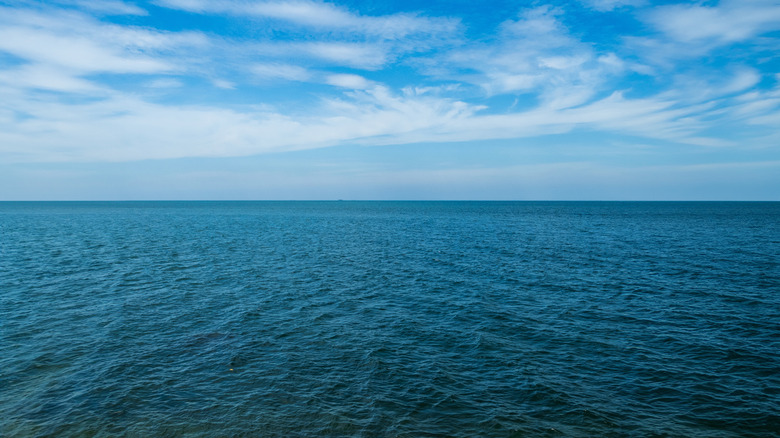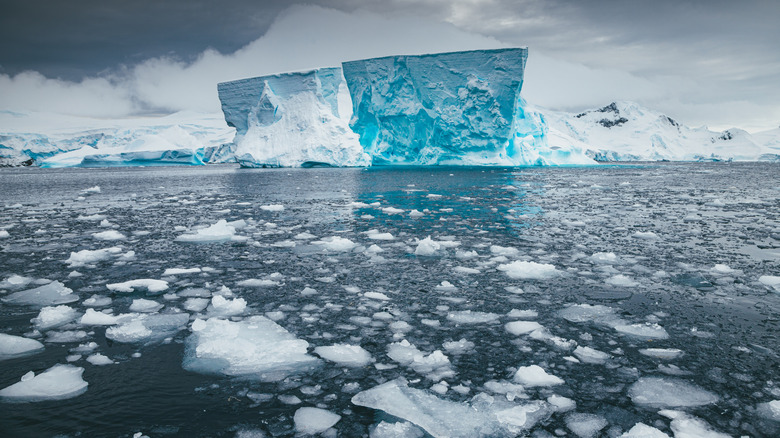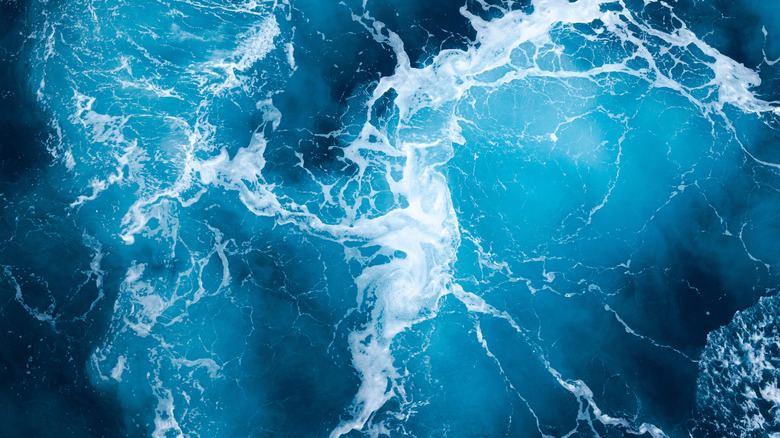This Is What Happens Where The Pacific And Atlantic Oceans Meet
Photographs have been circulating online for years that supposedly depict where the Pacific and Atlantic Oceans meet. In the photographs, there is a clearly visible line between the two, and the water on each side of the line is a different color. This has led to online speculation that the two oceans actually don't mix at all. But is that really the case?
The Pacific and Atlantic Oceans meet off the southernmost tip of South America, between that continent and Antarctica. Prior to the Panama Canal, this was the passage most ships took to get from one ocean to the other since the passage to the north, through Canada, had too much hazardous ice. Islands litter this area of water, and it is here that the oceans not only meet, but also mix.
Much of our oceans are still a big mystery to us due to the challenges of oceanic exploration. The Atlantic Ocean cooling at a record speed, the long-term effects of glaciers melting, and even the type of sea life found in the great trenches are all mysteries to study. Despite the challenges, ocean science has been able to monitor where the Pacific and Atlantic Oceans meet, mix, and what factors contribute to how fast they merge together.
How do the two oceans mix?
There are a few factors that influence the speed at which the two oceans mix. The Pacific Ocean is less salty than the Atlantic Ocean, which prevents them from mixing smoothly. The water between the islands off South America tends to be slower, which reduces the speed of the oceans mixing. However, the waters closer to Antarctica are rougher and the waves bigger, which actually speeds up the process further south. The two oceans will also blend together on the seafloor, where the daily changes of the tides influence their speeds.
Climate change is having an effect on the rate at which the oceans mix. Human pollution has had a detrimental impact on the waters of the planet. The Great Pacific Garbage Patch is one such impact that is clearly visible. Although a plastic-eating fungus is naturally helping to clean it up, it's not able to do so faster than we can pollute. Climate change has resulted in melting ice in Antarctica, which alters the density of the water and thus slows the rate at which the oceans mix.
Since the oceans actually do mix, why do we see two distinct colors where they meet? The most likely cause is the waters of two different temperatures coming together. The colder water around Antarctica meets up with the warmer water from the north, and there is a visible contrast when they come together. The saltier water of the Atlantic Ocean may also be a contributory factor.
Ocean photographs can be misleading
These days, if people online don't believe a photo is real, they assume it is created by AI. Given the increasingly realistic nature of AI images, it can be hard to tell what is real and what isn't — especially with new technology that will use AI to turn memories into photos. However, even before AI was everywhere, photos posted online could still be confusing and misleading.
A photo taken in 2007 that circulated around for years appeared to depict a permanent line in the water where two oceans met but never mixed. The photo — factchecked here by Snopes — was reportedly posted by University of California-Santa Cruz professor of ocean sciences, Ken Bruland, during his research in the Gulf of Alaska. It caused a great deal of speculation online.
What was seen was actually water with heavy sediment from glacial rivers meeting up with the ocean. This caused a difference in color and slowed down the waters blending together. It was not a permanent line, and the waters did eventually mix.


